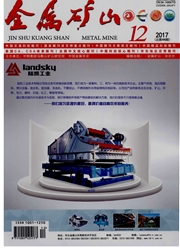

 中文摘要:
中文摘要:
将FastICA算法应用于青海省大柴旦镇某地区1∶10 000土壤地球化学数据处理中,借鉴相关系数来解决FastICA算法分离后顺序不确定性的局限,使用累积频率法解决分离后数据幅度不确定性问题,进而划分元素异常分带序列,选取85%、95%和98%作为异常分级.可以发现,相比直接用传统累积频率法圈定异常,FastICA算法充分考虑了数据的高阶统计特性,经过FastICA算法处理后的数据更能体现元素的空间分布特征.经后期工程验证,FastICA算法处理后的元素异常分布与实际的矿(化)体吻合度很高,能起到还原真实信息的目的,对指导下一步找矿具有现实意义,从而说明将FastICA算法应用于地球化学数据处理中是有效的.
 英文摘要:
英文摘要:
The FastICA algorithm is applied to process the 1 ∶ 10 000 soil geochemical data in the area of Dachaidan town in Qinghai province.The correlation coefficients are introduced to overcome the limitation of sequential uncertainty after the separation of FastICA algorithm,and the cumulative frequency method is used to solve the problem of data amplitude uncertainly after separation.The elements anomaly zoning sequences are divided,among which 85%,95% and 98% are selected as the three levels of anomaly in classification.It is clear that the FastICA algorithm takes full consideration of the characteristics of high order statistics,so the data from the algorithm can more clearly reflect the spatial distribution characteristics of elements compared with delineating anomaly by the traditional cumulative frequency method.The late engineering validation confirmed that the elements anomaly distribution acquired by the FastICA algorithm highly matches with the actual ore body (mineralization).So,the FastICA algorithm has the function of restoring the real information and has the significance in guiding the next prospecting work.It is effective to process the geochemical data by applying the FastICA algorithm.
 同期刊论文项目
同期刊论文项目
 同项目期刊论文
同项目期刊论文
 期刊信息
期刊信息
